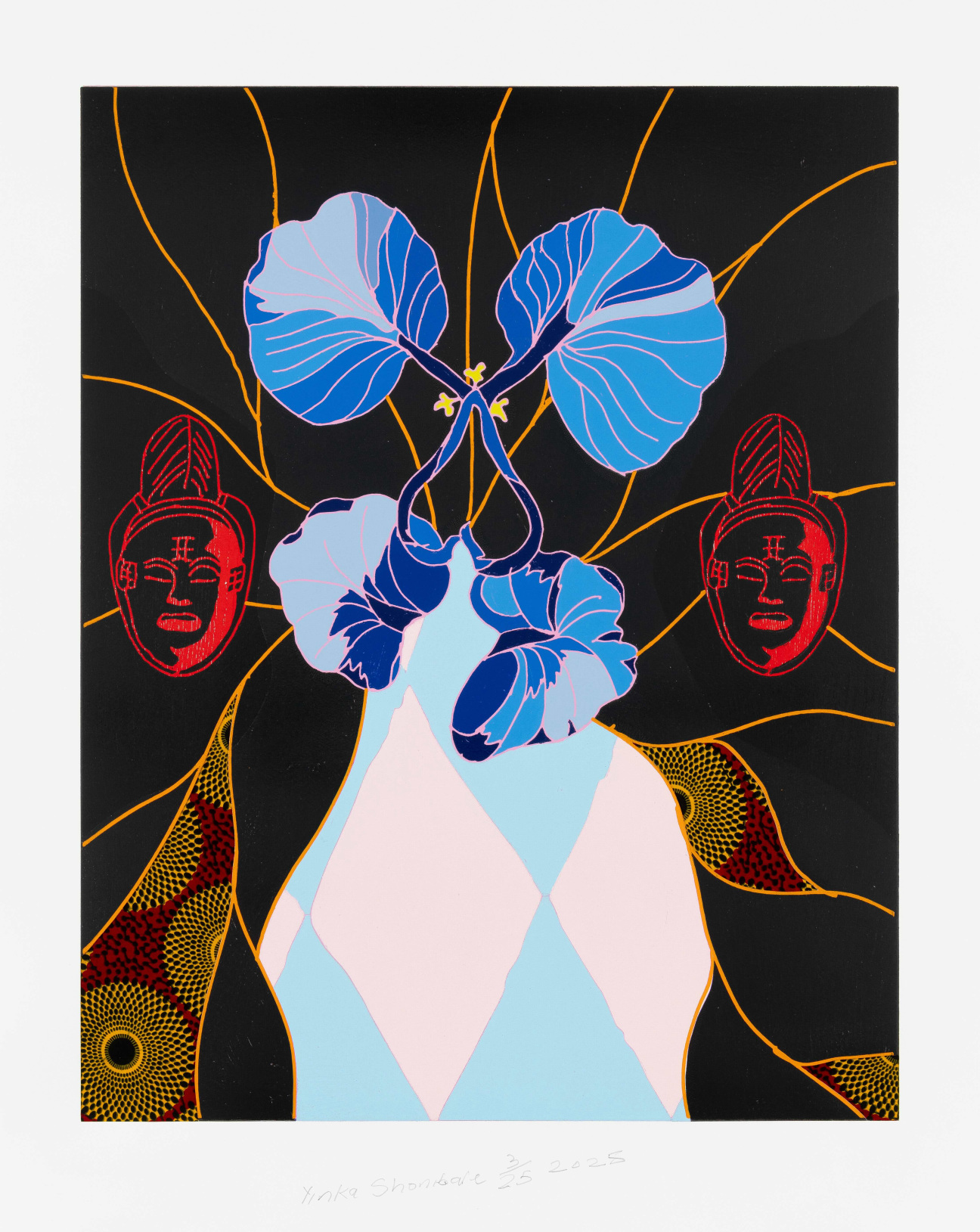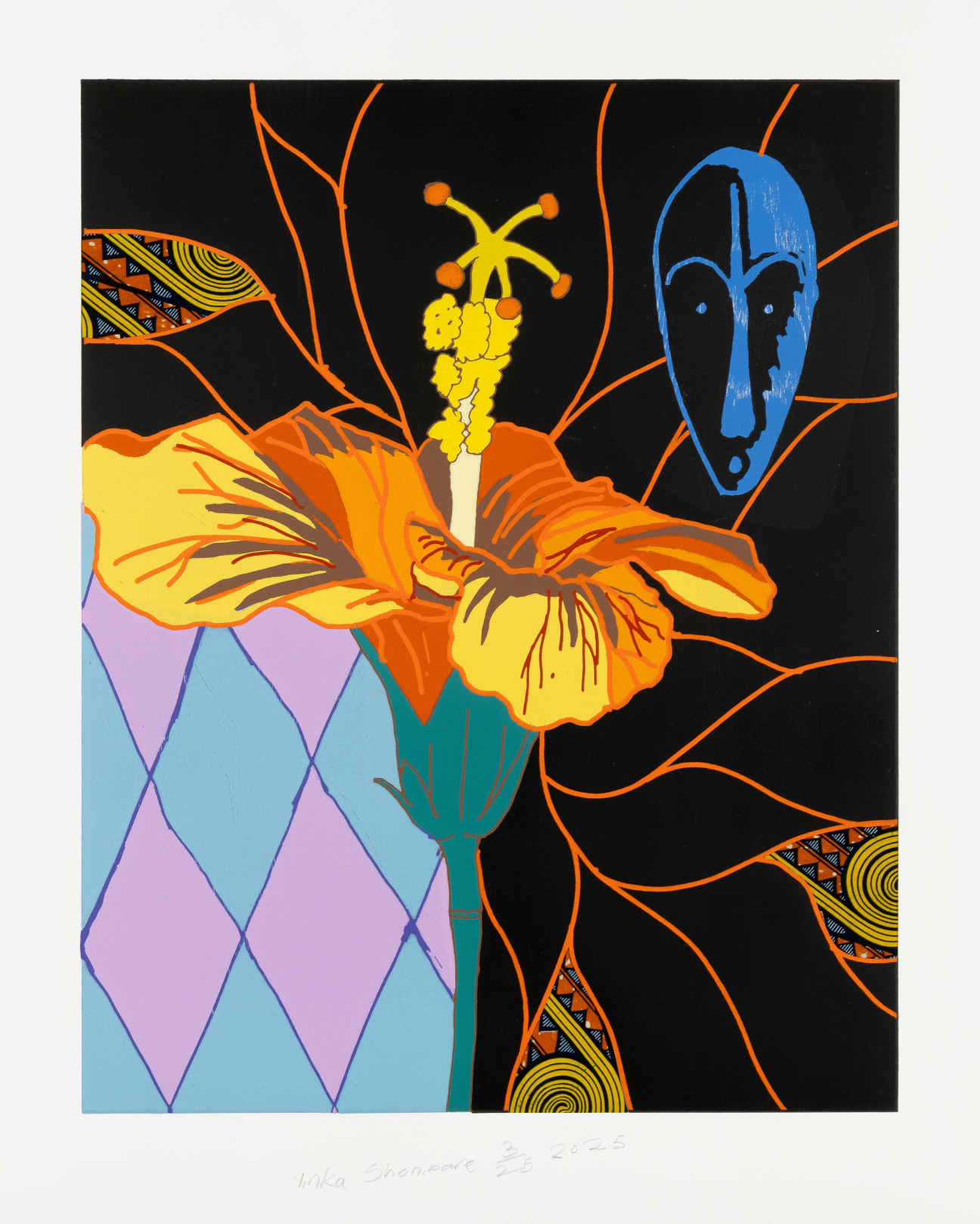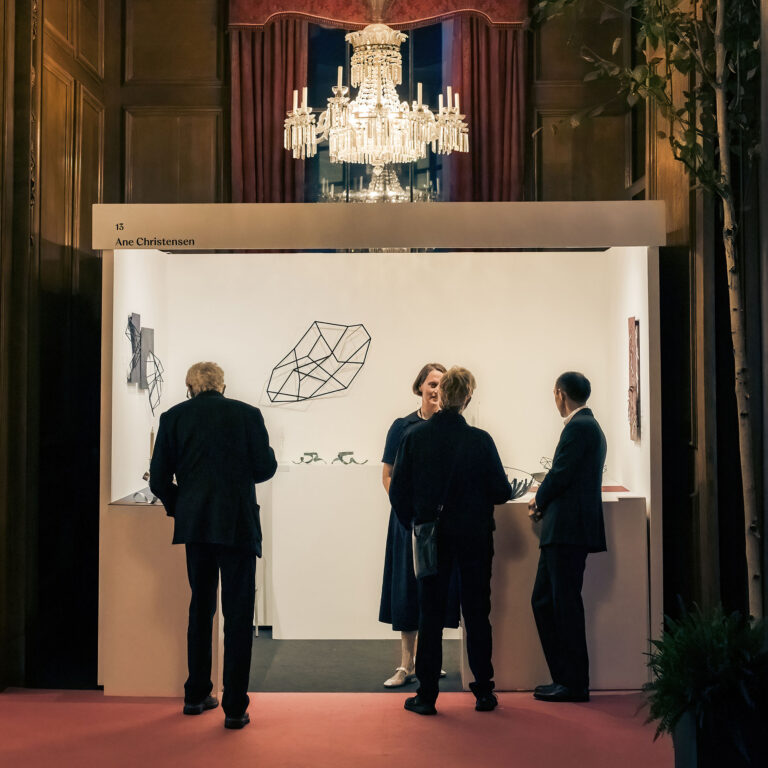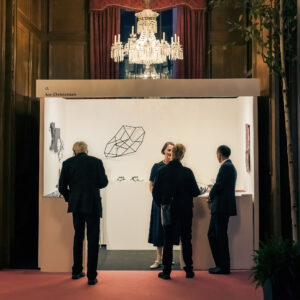Over five centuries, printmaking has evolved from a tool of mass communication into a dynamic force of artistic expression and innovation. This month, the 2025 edition of the IFPDA Print Fair elucidates that practice at the storied Park Avenue Armory.
With 75 exhibitors showing work from Old Masters and modern-day standouts like Gerhard Richter, Rashid Johnson, and Amy Sherald alike, fair visitors can trace the deep traditions of the medium through to the cutting-edge innovations of today from March 27 to 30. They can also sit in on artist talks with the likes of Mickalene Thomas, David Salle, and more. One standout to keep your eyes peeled for? A new series from Yinka Shonibare CBE, whose latest work continues his exploration of art history and post-colonial narratives.
The British-Nigerian artist has long showcased his unique storytelling through textile, sculpture, and woodblocks. Here, he pairs rare African flora with traditional masks in a series of woodblock and fabric collages, linking conversations around cultural conservation and exploitation with concerns about environmental fragility. Each woodblock is presented in a custom-designed portfolio made with Dutch wax batik, a fabric lifted from Indonesian makers and then mass produced for an African audience, where it became a regional staple.
Packed with vibrant colors and layered symbolism, these prints encourage their audience to rethink authenticity, identity, and power. Ahead of the fair, CULTURED caught up with Shonibare to discuss his creative process, the canon, and the research driving these latest pieces.

CULTURED: How do you feel ahead of showing this work at IFPDA?
Yinka Shonibare: It’s great to have my work at IFPDA; it’s one of the best platforms for launching new work. I’m delighted to be here.
CULTURED: There’s often a misconception that African art exists separately from the Western canon. Do you feel that perception is shifting?
Shonibare: African artists are doing what Western artists do, which is to express themselves in their own way, so in that sense, I don’t think it is fundamentally different.
CULTURED: How do you see these works bridging historical and contemporary conversations about environmental degradation?
Shonibare: I think that the ideas within this work should encourage people to think about how we historically protected the environment. There might be lessons learnt in thinking about the issues more.

CULTURED: What is your favorite aspect of working with woodblock printing? What keeps drawing you back to it?
Shonibare: My favorite aspect of working with woodblock printing is the magic that happens with each printed layer. I also love the texture of the wood on the print.
CULTURED: In this body of work, the very materials you use—from fabric to wood—carry their own layered histories. Do you see your choice of medium as part of the storytelling itself?
Shonibare: My materials cannot conceptually be separated from the picture—form informs content.
CULTURED: This new series places endangered African plants alongside traditional African masks. What drew you to this juxtaposition, and how do these elements speak to each other?
Shonibare: The endangered plants are overseen by ancestry masks. The masks represent a time in history when people worked in harmony with nature. I see the masks as guardians of memory and a celebration of ancestorial rituals. I think we can all learn from that.










 in your life?
in your life?

